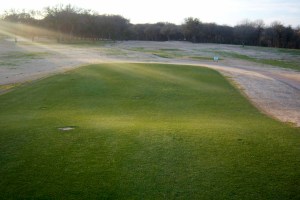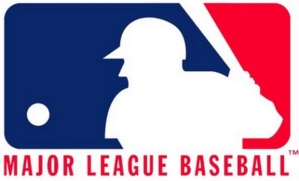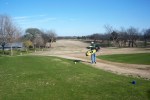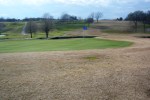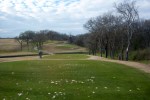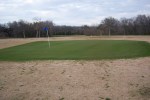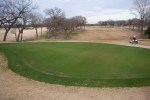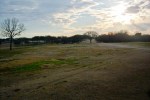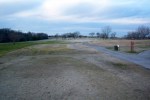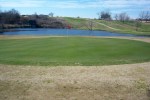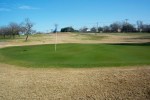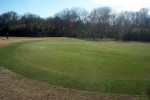26 Mar
Donnie’s Friday Focus: Jimmy Clay front-nine
The Jimmy Clay/Roy Kizer golf complex is far and away my favorite place for public golf in Austin. All in one place you have two 18-hole courses, two putting greens, a driving range with lights for night practice and a short/practice course consisting of four par 3’s and its own separate putting green and practice bunker.
The two courses are both moderately priced, Jimmy Clay features a more American country club style with narrow, tree-lined fairways and Roy Kizer is a wide open links-style course and a bit more expensive. If you don’t have time for an entire round, it’s only $5 to practice on the short course and you can play it and use the putting green and practice bunker as much as you like. Great deal.
Today I’m going to focus on Jimmy Clay because I find the layout more challenging due to the doglegged, tree-line fairways. I have no problem with links-style golf, I just find Jimmy Clay is a bit more difficult to navigate if you’re new to the course due to the abundance of trees.
#1 par 4 385 yds.
The first hole is a sharp dogleg left with water all along the left side. You may occasionally see golfers intentionally hit the ball over the water and on to the ninth fairway to get a better, closer angle to the green. Even if you don’t feel it’s your place to correct them, notice that there are white stakes along the outside of the water hazard indicating that playing that route is illegal, out-of-bounds, and the golfer should be taking a stroke and hitting his third shot from the tee-box. Your approach shot must be straight because the water still lurks on the left and thick trees pose trouble on your right. The green slopes back to front and features two bunkers, one on the left and one on the right. Finding yourself in these bunkers isn’t terrible. It’s better than being in the water or punching out of the trees.
#2 par 3 134 yds.
This is short par three into an hourglass green that gets pretty narrow around the neck. The surface itself is fairly flat but does roll of the back of the green down the hill. It’s much better to be short, below the hole than to be long or in either bunker guarding the front-right and back-left of the green. Club selection is key on this hole. Get a good feel for what the wind is doing before you tee-off.

From the blue tees, #3 might be the most difficult driving hole of all the public courses in Austin.
From the blue tees, this might be the most difficult driving hole of all the public courses in Austin. The narrow fairway doglegs sharply to the right and both sides are heavily guarded by thick trees. If you push your drive right, blast it. There is a clearing in the trees. You have to hit it pretty far to get there but trust me it’s there and you’ll have an open shot to the green. Whatever you do, don’t go left. The fairway itself slopes from right to left toward the trees and there’s a steep run-off along the tree-line that will cause your ball to roll down into the creek. The green itself is turtlebacked and not terribly difficult to put on. Getting started off the tee is the problem.
#4 par 5 540 yds.
From the tee it looks like you don’t have much room on your drive. The truth is, there’s plenty of room on your right once you get past the immediate trees right in front of you. Don’t go left. The trees are too think and you won’t be able to find your ball. Aim toward the pair of bunkers on top of the hill and hit a slight draw if you have one. From there it’s a straight shot, or two depending on how aggressive you are, to an elevated green that runs off the back. The surface is two-tiered and is guarded by two front bunkers. Whatever tier the pin is on that day is where you want to be.
#5 par 3 98 yds.
A 98 yd. par 3 with no bunkers or water should be a walk in the park, but for some reason this hole drives me crazy. It’s all about distance and wind. The green itself is narrow from front to back and runs off if you’re short or long. You’re definitely going to have a wedge of some sort in your hand for this shot, but which wedge to chose is always my problem. Study the wind, trust your distances, decide on a club and strike it clean. If you land on the green, putting is cake on this hole. If you go long and find yourself at the bottom of the hill, you’re not alone. I’ve been there plenty. Just be careful on your chip back up to the green. The last thing you want is to go long and run off the front of the green and be in the same position you are now, from the other side.
If you’ve never played here before, you can’t see the green or the water from the tee-box. Just know that they are definitely in reach. Oh yeah and by the way, the green is an island. Keep the driver in your bag, grab a long iron and hit a straight shot. From there you’ll be left with a 100 yd. wedge into the island. If you go left off the tee, you’ll lose your ball in the woods. If you go right, you’ll be able to find your ball, but will have no shot at reaching the island green in two. So here you are, 100 yds. away from the green with a wedge in your hand. Under any other circumstances you can hit this green 10-out-of-10 times. There’s just something about island greens that cause you to doubt yourself. Fight through it. Trust your swing. If you’re undecided when you address the ball, step back and go through your routine again. Forget about where the pin is and aim for the middle of the green. Bragging rights for the rest of the round are yours for the taking.
#7 par 5 468 yds.
Number 7 is a short par 5 in terms of distance, only 468 yds. long, but it’s all uphill. No real hazard threats on this hole, just put together two or three good, solid shots and work your way up the hill. The green is elevated, guarded by two bunkers and has a ridge that runs through the middle of the surface. The green drops off back-right and off the front so landing in a bunker on your second or third shot is actually better than catching the run-off and rolling all the way down the hill. Don’t be tempted by a flagstick that’s tucked near one of those runoffs. Aim for the middle of the green and give yourself an opportunity at birdie or par.
This par 4 is long, doglegs hard the left and is extremely narrow. Off the tee, you have to be either straight of slightly off to the right. If you go left, you’ll have absolutely no chance of reaching the green in two. Your approach shot demands precision because of the thick trees on the left and right of the fairway. There are two bunkers on the front-left and front-right that you must clear but don’t hit it too far, because the green runs off the back and right down the hill. I’m not going to lie, this is a difficult hole. Walking away with par is a great victory.
#9 par 4 386 yds.
You’ll see people take a lot of different angles off the tee on #9. The safest route is just to the left of the cart-path with a slight fade back to the right. A lot of players will aim to blast it over the two trees right in front of you, but be careful about going that route. There is a wooden fence just to the right of the trees that is out of bounds. If you push the ball even a little to the right, you’ll be O.B. and teeing off again on with your third shot. The green itself is elevated and guarded by a deep bunker that stretches across the front of the green. Once I get my distance, I always use one club higher than what I would normally hit because of the green’s elevation. From a perception standpoint, it’s misleading because it looks a lot closer than it really is. The surface slopes from back to front and rolls of the left and right of the green. You want to be on the front, putting uphill rather than on the back putting down, but make sure you don’t leave your approach too short. That bunker is deep and can be extremely unpleasant.
Next Friday: back-nine at Jimmy Clay G.C.
25 Mar
Selig’s “special committee” swings and misses
An off-day between games 4 and 5 of the league championship series (LCS) was eliminated, and another off-day between the division series and LCS was added.
Are you serious? After all the talk about tightening the postseason, this is what the “special committee” Bud Selig created came up with?
I’m not a baseball hater. I believe the MLB postseason is exciting and filled with drama. It’s the reward at the end of a marathon season. The sad thing is the league stretches the postseason out as long as they can and milk it for everything it’s worth. After 162 games where teams play nearly everyday, all the sudden fans, and players have to endure off-days in-between postseason games.
Staggered scheduling with off-days allows TV execs. to schedule every game in primetime for maximum ratings, I understand that. But I also know that, more than any other sport, baseball players are creatures of habit. By October, they are not only used to playing daily, but prefer it.
I’m just saying, playing multiple games at once, especially in the early rounds has proven to be a huge success in the past. Just look at the excitement for March Madness or New Year’s Day Bowls before college football got greedy and made the same mistake MLB does.
Don’t make us wait a month after the start of the playoffs to see a a new champion crowned. Capitalize on the excitement and drama of the postseason and give fans all the baseball they can handle on a daily basis. Making players and fans wait doesn’t build the excitement. It hurts the product on the field and the fans relationship with it.
24 Mar
The more Tiger speaks, the more we learn nothing
Every time Tiger opens his mouth, he passes on another opportunity to end this saga by telling us what happened on Thanksgiving weekend.
If Woods continues to dodge the question of what exactly transpired the night of Nov. 28 by claiming it’s a private matter, there will never be any closure to this story regardless of how many Masters or any other major championships he racks up for the rest of his career.
Last Sunday, Woods conducted his first two interviews since the incident which aired on ESPN (above) and the Golf Channel. However, when the question arose that everyone wants to know, he maintained his desire for privacy.
Before you buy the line that we are “seeing the real Tiger now”, realize the fact that Tiger hired former White House Press Secretary Ari Fleischer to dictate his moves with the media. It is rumored that Fleischer recently parted ways with Tiger, but Woods’ reluctance to come clean on his own leads me to one conclusion: we shouldn’t believe a word that comes out of his mouth.
You do remember Ari Fleischer don’t you? Let me remind you. After serving for former President George W. Bush during the Iraq War and advising Mark McGwire during his steroid admission, he now works as a media consultant for college football’s BCS. Not the most trustworthy list of clients Tiger was a part of.
We’re not “seeing the real Tiger now”. We’re seeing a carefully constructed media perception of a man whose reputation has been in damage control mode since Thanksgiving.
The “real” Tiger is the obsessive-compulsive, micro-managing, controlling man who dominated his sport and truly believed he was indestructible.

Tiger should be opening up and rebuilding his trust, not hiring PR gurus like Ari Fleischer to construct media perceptions of the 'new Tiger'.
photo by: Associated Press
The fact that Tiger continues to believe what happened that night is private and should not be discussed, tells me that Tiger has learned nothing through this whole experience. If you want us to know the real Tiger then do us all a favor and open up and show yourself without the help of PR flak-masters like Ari Fleischer.
Until you do, this saga will inevitably continue and we’ll continue to not believe a word that comes out of your mouth.
23 Mar
NCAA: leave the tourney alone
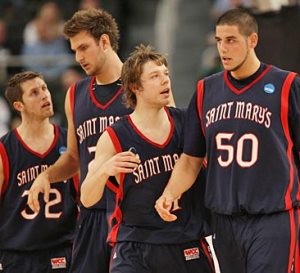
Cinderella teams like Saint Mary's capture the hearts of sports fans every March with dramatic upset victories.
photo by: Getty Images
Dear NCAA,
I know you’re basking in your own glory, coming off what could be argued the most exciting first two rounds in recent NCAA tournament history. But before you use the current popularity of March Madness as momentum to persuade fans like myself that expanding the tournament to 96 teams is a good idea, I’m going to let you in on a little secret.
Just because something is great, doesn’t mean more of it is necessarily better.
The NCAA college basketball tournament is the closest thing we have to a perfect postseason in sports. There’s no BCS, no first round byes, no home and away games, just one single-game elimination bracket of the 65 best teams in the country. Win, you move on. Lose, you go home.
The greedy, money hungry suits in your organization must be licking their chops at the prospect of making even more money by expanding the tournament from 65 to 96 teams in the near future. More games equal more drama, which produce higher ratings, meaning more ad revenue, etc. right? Wrong.
Pick up the phone and ask the NCAA bowl committee how the turnout, ratings and revenue for the Beef ‘O’ Brady’s St. Petersburg Bowl and San Diego County Credit Union Poinsettia Bowl were last year. Any college football fan will tell you, it’s definitely possible to have way too many teams playing in the postseason.
Whether you add 32 more mid-major teams, power conference teams, or a combination of both, the point is neither will better the tournament. We want to see mid-majors like Northern Iowa and St. Mary’s upset powerhouses Kansas and Villanova. We don’t want to see mid-majors play each other. Part of what makes upsets so special is that no one rationally gives these smaller schools a chance to win against the elite.
No one cares if David beats another David. But when David slays the mighty Goliath, it’s not only newsworthy, it’s legendary.
We certainly don’t want to see average teams from power conferences be rewarded for season-long mediocracy with a trip to the big dance. An invitation to the tournament should be a reward for a great season, not a hand-out to a team that stumbled down the stretch.
Once again your tournament has been great, creating story-lines, upsets and buzzer-beaters that we will remember for the rest of our lives. Do us a favor. Don’t be blinded by the money, leave March Madness the way it is and let us enjoy it like we always have.
Sincerely,
22 Mar
Goldmine for cheap green’s fees in Austin
I’m a full-time college student. I feel your pain.
Golf512 is to local golf what other companies like Orbitz, Cheap Tickets and Expedia are to traveling. Golf512 is a free service, that compiles unbooked tee-times from nearly every public course in the Austin area and offers those times to subscribers at a fraction of the cost.
Did I mention this service is free.
Not only will you end up frequently paying half the price everyone else does for the same course, the site will also e-mail you the best deals daily. Once you find a tee-time you like, click on the time and the site will immediately prompt you to insert your credit or debit card information to book the tee-time.
Another luxury of this service is if bad weather shuts down the course on the day of your tee-time, golf512 issues a full refund on your card. I recently encountered this over spring break. I called the local customer support number, gave my last name and tee-time and was issued a full refund the next day.
I have used this service religiously for the last year and have saved hundreds of dollars in the process. Golf512 has even expanded in the state to Houston and Dallas/Fort Worth area golf courses as well.
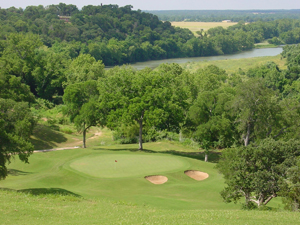
Pine Forest G.C. in Bastrop, TX, is a beautiful course in the Hill Country and frequently featured on golf512.
Part of what makes golfing great is that no two courses are the same. The more courses you play, the more you appreciate the intricacies that each has to offer. With golf512 you can experience a plethora of courses whether you’re in your hometown or not.
And you don’t have to break the bank to do it.
13 Mar
NBA Jam Wii: EA Sports puts new touch on old classic
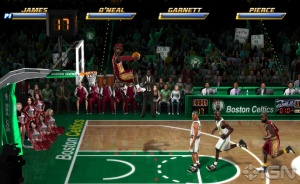
LeBron James' athletic skill set is tailor-made for a game like NBA Jam.
Photo courtesy of EA Sports
“Boomshakalaka!”
“He’s heating up.”
“He’s on fire!”
To some of you, those phrases mean nothing. To others, including myself, those phrases instantly transport us back to countless childhood hours of video game bliss.
NBA Jam first debuted in 1993 as an arcade-style, two-player basketball game and made its way to the Super Nintendo and Sega Genesis gaming platforms a year later changing the landscape of basketball simulation video games forever.
When I saw the first screen shots (above left) of EA Sports’ new NBA Jam Wii, due to release sometime this year, I immediately remembered my favorite past duos and dreamed about matchup possibilities in the current, star-studded NBA.
Top 5 old-school duos:
-
5. New York Knicks: Patrick Ewing & John Starks
4: Charlotte Hornets: Larry Johnson & Alonzo Mourning
3: Phoenix Suns: Charles Barkley & Kevin Johnson
2: Atlanta Hawks: Dominique Wilkins & Stacey Augmon
1: Utah Jazz: Karl Malone & John Stockton
Top 5 wish list for NBA Jam Wii:
-
5. Los Angeles Lakers: Kobe Bryant & Ron Artest
4. Denver Nuggets: Chauncey Billups & Carmelo Anthony
3. Boston Celtics: Paul Pierce & Kevin Garnett
2. Cleveland Cavaliers: LeBron James & Shaquille O’Neal
1. Orlando Magic: Vince Carter & Dwight Howard
Regardless of who EA decides to pair up in the classic remake, I think the game will be extremely successful. The NBA Jam brand created emotional bonds with a lot of kids in the early ’90s and that should be easy to capitalize on today.
The actual players will change. But the trash-talk, friendly wagers and arcade-style beat downs will be exactly the way we remember them.
12 Mar
Donnie’s Friday Focus: Morris Williams back-nine
Last Friday, I focused on how to maneuver through the front-nine at Morris Williams G.C. Today we’ll take a look at the back-nine and I’ll tell you the places to want to be, and places you want to avoid on your way to a successful round.
#10: par 4 406 yds.There’s no tricks on this drive. You have to hit a straight ball of the tee. The fairway is fairly wide, but you have trees and water on either side so keep your drive as straight as you can. The rest of the hole is extremely open and easy. There’s a lot of room around the green and no bunkers. If you pull your uphill approach far left, the street may come into play but you would have to be way off target to reach it. The green is flat and easy to putt. If you avoided trouble off the tee, this hole is yours for the taking. #11: par 5 486 yds.
In my opinion, this is the most difficult hole on the golf course. That doesn’t mean you can’t score well, it just means you’ll have to earn it. The tee-shot is partially blind because the hole drops significantly down the hill and doglegs right. Aim toward the double power lines in the distance and let it rip if you want a chance to make it over the creek in two. Even if you decide to lay-up on your second shot, the lay-up is difficult because there’s not a lot of room in between the bottom of the hill and the water. Be careful with your distance. The green is all the way back up the hill and guarded by two front bunkers that are deep. The green itself slopes from back-left to front-right. If you make birdie you should be proud, but even walking away with par on this hole is as good as a birdie on others. #12: par 3 196 yds.
Another scenic par 3, #12 is on the side of a hill that rolls sharply toward the woods. You must clear the creek and avoid the woods on the right. However, even if your tee-shot is left of the green and safe from the hazards, you’ll still have a nasty chip or pitch shot on a fast J-shaped green that rolls hard right down the hill and toward the trees. Trust your swing and do your best to land the ball on the surface. #13: par 4 337 yds.
This hole is where course experience pays off. What I’m about to tell you sounds crazy but take my advice and watch everyone else lose their balls. Aim for the trees straight in front of you. They are situated on a mound that will naturally kick your ball right to a narrow fairway at the bottom of the mound and you’ll be left with a 100 yd. shot into the green. If you try to squeeze your way with a draw into the fairway, you’ll either end up in the woods on the right, hitting it past the narrow fairway and into the woods or pulling it left behind the trees with no chance of reaching the green. Aim toward the mound and roll the dice. The green is guarded by water on the front-left and deep woods guard the right and back. Hit a high draw and bail-out long and left if necessary. #14: par 3 175 yds.
There’s not a lot of danger on this par three. The water is literally right in front of you and posses no threat barring a complete duff off the tee. The path to the green is straight and uphill and the surface itself is flat with no bunkers and plenty of room around the edges. This is a simple hole. Take advantage. #15: par 4 376 yds.
This hole doglegs right and downhill. Aim for the cart path off the tee and hit a high fade allowing your ball to roll down to the bottom of the hill. From there, you’ll have a 100 yd. uphill shot the green. This green is unguarded but slightly two-tiered. The low-point of the green is on the front-right. Depending on pin position, try to stay below the hole giving yourself an uphill put to the pin. #16: par 4 409 yds.
If you have a draw in your swing repertoire, this is the time to showcase it. This hole doglegs very sharply to the left and you’re faced with trees on the left and right off the tee. The fairway slopes from left to right so if you can’t draw the ball, aim toward the left of the fairway because the slope is going to inevitably bring your ball to the right. Your approach is slightly uphill to another unguarded green. The surface funnels toward the middle from the front and back. If you avoid trouble off the tee, the rest of the hole should be a breeze. #17: par 5 503 yds.
This is another partially blind tee-shot that rolls to the bottom of a hill. Aim just left of the big tree and remember a miss left is better than a miss right. The trees are much more dense on the right. Your second shot is completely blind back up the hill toward the green. Once you get up there, the narrow green is turtle-backed with sand on the left. Judge your distance carefully when approaching this green to avoid rolling off the sides if you miss the surface. #18: par 4 415 yds.
You’ve made it to the 18th tee and you’re rewarded with the widest fairway on the course. The fairway slopes from left to right but there’s plenty of room on both sides for you to grab your driver one last time and send him off on a glorious note. The green is fairly narrow so don’t get caught in the bunker on the left. You wont have very much green to work with at all and the surface rolls off the right making it very difficult to stop your bunker shot on the green. It’s better to be short or long with your approach to the 18th and final green.
Next Friday: front-nine at Jimmy Clay G.C.
8 Mar
Weekday golf withdrawal remedy: practice
It’s Monday. For the average golfer that means back to school or work for another long, stressful week.
While you may lack the free-time necessary to play an entire round during the week, that doesn’t mean you have to abandon the sport you love for five days. In fact, it hurts your golf game.
My advice, practice more.
Below: Google map of public courses in Austin that include practice facilities.
You wouldn’t drive a race car on the weekends without putting any work on the car or track during the week. So what makes you think if you play golf once a week without practicing your scores will magically decrease?
Compare how many times you play golf to how many trips you take to the practice range or putting green in a given month. If the comparison is lopsided, you’re not putting yourself in position to succeed on the weekends.
Recognize where you lose the most strokes during a round, and practice that part of your game.
For example, if you average two putts on every green, that’s 36 total puts in a round. If your average score is 90, that means putting accounts for 40 percent of your total strokes. Compare that to your driver which you use less than 18 times in a round (due to par 3’s and other short holes ). But how many times to do see golfers go to the range, pull out their drivers and start whaling on golf balls?
If you’re having a bad day and you want to take out some aggression on a bucket of balls, I get it. But if you’re trying to lower your golf scores, spend some time on the putting green. Putting is a perfect way work on your game during the week because you can stay as long or as short as you want, it’s free and you’re working on the one shot in your golf repertoire that produces the most strokes.
Instead of going straight home after school/work, stop by a golf course and putt for 30 mins. two-three times a week. I guarantee your total putts and scores will go down when your long awaited weekend round returns.
5 Mar
Donnie’s Friday Focus: Morris Williams front-nine
Morris Williams is arguably the most challenging public course in Austin. It’s also the longest at 6,637 yds. from the blue tees. The rolling terrain creates nice elevation changes throughout a layout that features small, undulated greens that are slightly elevated.
If you’re used to playing shorter courses like Hancock, don’t be intimidated by Morris Williams’ length. I’m not a big knocker either, and I’ll tell you where to position your ball to have an extremely successful round.
#1: par 4 373 yds.The first drive is always nerve-racking, but you have tons of bail-out room on the right. Whatever you do, don’t pull your drive left. You’ll be behind the trees and have an impossible, blind shot into the green. The green is two-tiered, slopes from back to front and is guarded by a front, right bunker. Place your ball on the tier that features that day’s pin placement to give yourself a flat putt. #2: par 5 540 yds.
Longest hole on the golf course. Try to get distance off the tee, but be aware of the trees and water hazard on the right. I would aim right along the cart path, because the hole straightens out on your second shot. The green slopes from back to front and is guarded by sand on the left and water on the right. If you’re uncomfortable with your approach, leave it short to give yourself an uphill put to the pin. #3: par 3 187 yds.
One of the more scenic holes, #3 is 187 yds. long, but it’s downhill to a wide open green with no bunkers. Don’t be intimidated by the water. The green is there for the taking. Grab a mid-to-long iron and hit a solid shot. Once you get there, the green slopes back to front and left to right. Any shot where you have to clear water might look scary, but this is a really easy hole once you clear it. #4: par 4 380 yds.
Duplicate your tee-swing from the first hole. There’s tons of room and the right and lots of trouble left. Keep the same mindset as you approach the green. A miss right is better than a miss left or long. If you go left, you’ll be in tall weed-grass that’s impossible to get out of (trust me). If you go long, your ball will run off a green that slopes from front to back and down the hill into the woods. #5: par 5 519 yds.
This drive is pretty wide open. There is a street on the left, but you’d have to hit a really long, severe slice to reach the fence. Aim for the gas stations in the distance and try to stay on the left-hand side of the fairway to set up your second shot. There’s no bunkers to keep you from attempting to reach the green in two on this par five. However, the street still poses out-of-bounds danger on the left and if you miss-judge your distance and go long, your ball will roll all the way down the hill. When you’re down there facing a blind shot back into the small green, you might wish you had laid up. #6: par 4 356 yds.
This tee box is where course experience comes in because you can’t see the fairway from the tee. The hole does dogleg left, but it’s better to miss further right than left because of the trees. My advice is to aim for the cart path and if you push it right, it’s ok. You’ll have an open alley to the green. The green itself is one of the more difficult ones on the course. Walk around and size your putt up from every angle because some of the breaks are misleading. The back portion of the green is fairly flat, but the front breaks toward the middle of the surface and the front-right breaks off the green. #7: par 4 412 yds.
Another wide open fairway off the tee, but the street is on your left if you pull it terribly. The fairway slopes from left to right and the more right you are, the more blind your uphill approach will be. The perfect drive is right along the inside right of the cart path. If you are faced with a blind approach from the right side, aim for the cluster of trees on the left and hit a high fade. The green is not guarded by any bunkers, and one of the more flatter surfaces on the course. It is especially easy to putt if you’re on the front putting uphill. #8: par 3 174 yds.
At 174 yds., this green is closer than it looks from the tee. Two bunkers guard the front of the surface and the the green slopes off to the left and off the back into the woods. The only open area around the green is to the right. The green is flat, so you can stick your ball pretty much anywhere on the surface. If you miss, miss long and right. #9: par 4 393 yds.
There are some obviously thick trees on your left, so leaving your club-face open on this drive to avoid going left is not a bad thing, there’s plenty of room right. Your approach will be slightly uphill to a two two-tiered green with one bunker on the front-right. The angled green slopes from the back-right to front-left. Depending on pin position, it’s easier to put from the left side of the green up-hill, then the right side putting down-hill and right to left.
Next Friday: back-nine at Morris Williams G.C.
Photos by: Donnie Hogan

